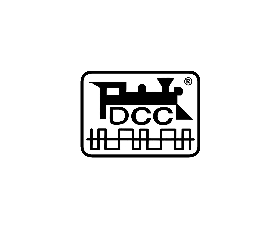What is a bootlace ferrule? Answer, it’s a very convenient fitting to attach to the end of a wire that will then fit very snugly into a screw terminal. The DCC world is full of equipment that is supplied with rows of screw terminals. I find that connecting bare wire into these a very hit and miss affair, and the ferrule is a very cheap way of getting a reliable connection every time. Bootlace ferrules are sometimes referred to as cord end ferrules or cord end terminals.
Bootlace ferrules are supplied in a range of sizes, some of the smallest will take the very thin wires normally found on locomotive decoders, while the biggest cater for cables way bigger than those used on the heaviest duty DCC power bus.
Fitting the Bootlace Ferrule is fast and straightforward. The wire is stripped in the usual way, but instead of twisting the multi strand wire together and then inserting in the terminal, the bare wire is pushed into the ferrule and this is then crimped in place with a special crimping tool. The ferrule then provides a single robust pin on the cable end that can be attached much more reliably in a screw terminal than the bare wire.
I’ve just adopted them as a standard way of wiring my layouts, and soldering has now been dispensed with apart from attaching dropper wires to the track. Terminal blocks and ferrules are now used everywhere. There are several reasons for this:
- Reliable electrical connections — all wire strands conduct current.
- No spreading of wire strands after a wire is clamped into a terminal block or other component.
- No fraying of wire strands, particularly in cases where the wire is very small or is removed often from its housing for testing purposes.
- No breaking of wire strands in cases of bending, wire stress or vibration.
- No unwanted contacts. Ferrules eliminate the possibility that strands might accidentally touch another termination and create shorts.
- Easy wire insertion in a terminal block clamp, particularly for smaller gauge wires.
- Permanent crimping of two or more wires (jumper connection) before insertion in the block clamp (twin wire ferrules can be used, but a larger sized single wire ferrule can also be used with two wires ).
- No more soldering in difficult to access places under permanently fixed baseboards – Ive had enough of lying on my back under a baseboard while hot solder drips on me from above!
- Oh yes, and they look great on a panel!
Watch out for the prices charged by some suppliers; buy from the right place and these little beasties are really cheap, only fractions of a penny each. My last order came from crimp terminals.co.uk, and their prices are about the lowest I’ve found. A good target price is between £5 – £6 per 1000.
Bootlace Ferrules are colour coded according to size so that in commercial uses an electrical engineer can rapidly determine the size of cable he is working with and replace it appropriately. Just to make things complicated though, there are two different colour coding standards. I’ve included all available sizes for completeness, however its unlikely you will ever want more than 2.5mm for a model railway application.
| Size | French system | German system | |
| 0.25mm² | Violet | Light blue | |
| 0.5mm² | White | Orange | |
| 0.75mm² | Blue | White | |
| 1.0mm² | Red | Yellow | |
| 1.5mm² | Black | Red | |
| 2.5mm² | Grey | Blue | |
| 4.0mm² | Orange | Grey | |
| 6.0mm² | Green | Black | |
| 10.0mm² | Brown | Ivory | |
| 16.0mm² | Ivory | Green | |
| 25.0mm² | Black | Brown | |
| 35.0mm² | Red | Beige |
The French colour code seems to be more prevalent, but mixing types can allow for some colour coding of layout wiring
So, what size do I need?
I use 24/02 cable for my DCC bus, this generally has a wire thickness of 0.75mm, this is a perfect fit in a 0.75mm ferrule. For dropper wires from the track I generally use 7/02 cable and this fits snugly in a 0.25mm ferrule. 0.5mm ferrules can take 2 dropper cables and 1.0mm can take a dropper cable alongside a bus cable. Move up to 1.5mm to join 2 bus cables with one ferrule in a single terminal
The crimping tool is a one off purchase, I found Amazon was as good a place as any to acquire this, however I wouldn’t recommend any of the suppliers on Amazon for the ferrules themselves, they are far too expensive ( I’ve seen packs of 100 priced at the same level as you pay for 1000 if you shop around). The CK crimping tool below is a good combination of good quality and reasonable price, but there are quite a few alternatives to choose from.






Kevin,
I have just found your information, which is very good.
However, I am trying to find what seems to be a difficult answer to the question “where can I get the Ferrules that fit into the Hornby Switches (I am using oldish equipment and am not DCC !).
All of the sizes I see appear to refer to cable sizes, not the actual Ferrule Pin size.
I do hope that you can help.
Thank you.
Peter
I’m afraid I can’t help on this one, and it’s probably down to trial and error. I suspect some of the larger ferrules might work, but I’ve got no access to the Hornby kit you refer to in order to check it out.
Suggest you buy a few assorted ferrules and experiment
Kevin